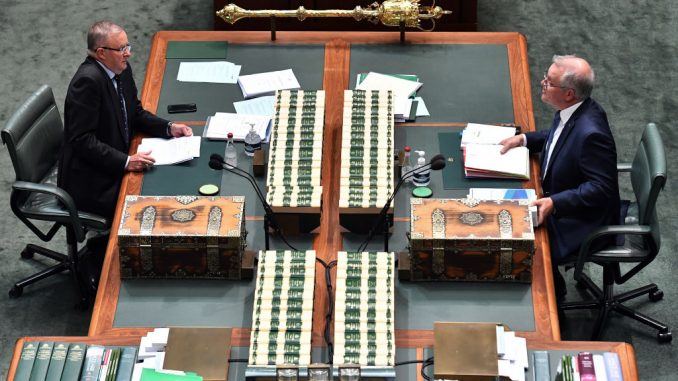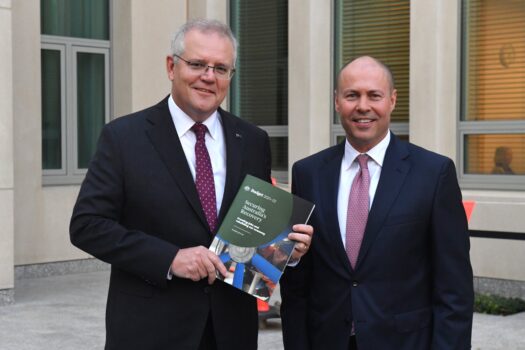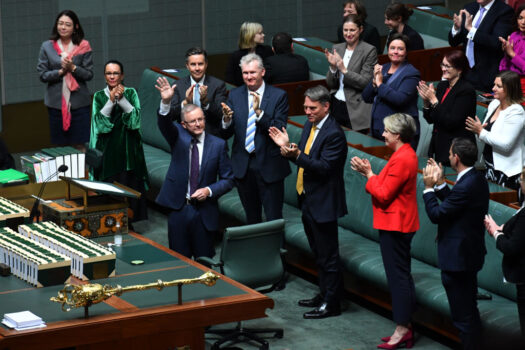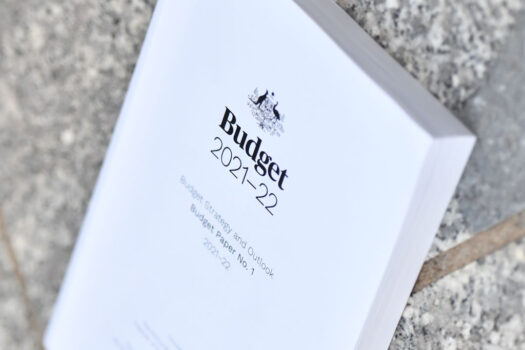
Commentary
There can be no doubt that the 2021-22 Australian federal budget announced last week was simply a spending spree. Policy decisions announced since October 2020 will be adding $31 billion a year to the deficit by 2023-24.
In the context of a strengthening economy and already bloated public debt, this marks the 2021-22 budget as one of the worst in living memory—popular with voters in the short-term perhaps, but irresponsible in any other sense. The government will need to go to the polls before the costs of this irresponsibility begins to permeate the consciousness of voters.
Further, more spending will surely be on offer in the election campaign, whenever it comes.
Will the federal Labor opposition take a different approach?

During the 2007 election campaign, when a government up against the wall was on a similar spending spree, the then-Labor Opposition Leader Kevin Rudd said, “Today I am saying loud and clear that this sort of reckless spending must stop.”
Never mind that Rudd had his own sort of reckless spending when the Global Financial Crisis intruded less than a year into his government. But Rudd’s rejection of the spending spree approach obviously did him no harm, as he soon won the 2007 election.
Fast forward to 2021, and current Labor Opposition Leader Anthony Albanese’s budget reply speech last week seemed only to raise the ante. While not repudiating any of the government’s new spending, it added the promise of a new $10 billion program for social housing.
Conveniently, under arcane budget accounting rules, it won’t affect the “underlying” budget deficit—which is the measure that receives the most attention—because it is financing an off-budget agency.
So Labor can promise to spend $10 billion without it inflating the underlying deficit. But it is public money whichever way one looks at it, and it will increase the “headline” deficit and the government’s borrowing requirements.

A budget reply speech does not make an election campaign platform, but the portents for avoiding an election bidding war are not good. Much of the government’s new spending benefits key Labor constituencies and will be difficult for Labor to repudiate.
Whether or not there is much difference between government and opposition on spending, there is fertile ground for differences on taxation.
Labor has not completely discarded its proposed 50 percent increase in capital gains tax, and curtailment of negative gearing carried over from the 2019 election. Whereas the government will continue to oppose them.
The government has refused to countenance a dedicated income tax levy for aged care financing, which might appeal to Labor.
The low and middle-income tax offset was supposed to be abolished when the government’s stage two personal income tax cuts came into effect because the stage two cuts delivered the same benefit as the offset.
However, when stage two was brought forward by two years to 2020-21 the offset was retained, and this budget has extended it again for the 2021-22 income year. Although there is a strong case for removing the offset, it is likely to be an election issue.

Also in the area of personal income tax, the Coalition and Labor are likely to differ on the government’s stage three personal income tax cuts currently legislated to take effect in July 2024. This is the most significant stage of the government’s tax cuts, as it reduces the current 32.5 percent marginal rate to 30 percent and extends it all the way up to $200,000 by abolishing the current 37 percent marginal rate bracket.
This is a very important reform for improved incentive in the tax system and the government is right to stand by it, but the loss of revenue clashes with the government’s ramping-up of social spending and the imperative of budget repair. Labor has sounded negative towards the stage three tax cut but is yet to declare its hand on repealing the legislation.
The government’s 100 percent deduction for capital expenditures by businesses with revenue below $5 billion is a temporary measure that has been extended in the latest budget to 2022-23.
Although the measure is temporary, the problem it addresses—depressed business investment—is an entrenched one and business taxation needs to be made more friendly to investment in a long-lasting way.
Labor has its own ideas for an investment allowance of limited scope, and it remains to be seen if the Coalition develops a new policy in this area. Given the history, it is most unlikely to be a company tax cut beyond what smaller companies already receive.
It is clear from this brief survey that taxation is likely to be a major point of difference in the next election, as it was in 2019.
Robert Carling is a senior fellow at the Centre for Independent Studies and a former IMF, World Bank, and federal and state Treasury economist.
Views expressed in this article are the opinions of the author and do not necessarily reflect the views of The Epoch Times.






Be the first to comment